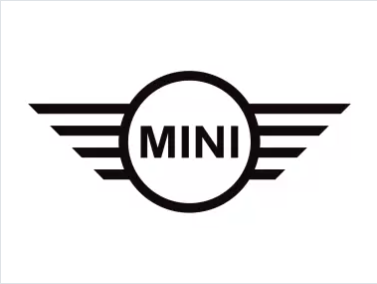- 작성자 Barrett
- 댓글 0건
- 조회 12회
- 작성일 2025.08.09
본문

Key Programming and Codes: Unlocking the Secrets of Modern Automotive Technologies
The automotive landscape has gone through a significant transformation over the previous couple of years, with technological improvements reshaping how cars run. One essential aspect of this evolution is key programming and coding. This article looks into the intricacies of automotive Key Programming And Codes programming, the different kinds of keys, the coding procedure, and typical FAQs surrounding this essential aspect of vehicle security.
1. Comprehending Key Programming
Key programming is the procedure of configuring a vehicle's key or key fob to communicate with the car's immobilizer system. Modern automobiles typically have advanced security functions that use innovative innovation to avoid theft. This security is mainly reliant on the programming of keys and key fobs.
1.1 Types of Automotive Keys
There are several kinds of keys utilized in modern lorries. Understanding these types is essential for both customers and automotive professionals:
Traditional Mechanical Keys: These keys are manually cut to fit the vehicle's ignition lock. They do not include electronic parts.
Transponder Keys: These keys include a chip that interacts with the vehicle's onboard computer system. When the key is inserted, the car confirms the signal before allowing the engine to begin.
Remote Keyless Entry (RKE) Keys: Often referred to as "key fobs," these devices allow the user to unlock and start the vehicle without inserting a physical key into the ignition.
Smart Keys: These advanced keys enable keyless entry and ignition. The vehicle finds the existence of the smart key, making it possible for the driver to start the engine with the push of a button.
1.2 The Importance of Key Programming
Key programming plays a critical function in automotive security and functionality. Here are some reasons that it is considerable:
Anti-theft Protection: Properly programmed keys prevent unauthorized access to the vehicle, minimizing the risk of theft.
Compatibility: Key programming guarantees that the key or fob is suitable with the specific make and design of the vehicle, allowing it to operate effectively.
Functionality Restoration: If a key is lost or harmed, programming a brand-new key or reprogramming an existing one brings back the vehicle's functionality.
Table 1: Automotive Key Types and Features
| Key Type | Description | Features |
|---|---|---|
| Conventional Mechanical | Easy cut key utilized in older cars | Manual operation |
| Transponder | Contains a chip for communication with the vehicle's computer | Boosted security |
| Remote Keyless Entry | Permits remote locking/unlocking without a physical key | Convenience and flexibility |
| Smart Key | Keyless entry and ignition performance | Advanced technology |
2. The Key Programming Process
The key programming procedure can differ depending upon the type of key, vehicle make and design, and producer. Nevertheless, it generally includes a number of key steps:
2.1 Preparing the Vehicle
Before starting the programming procedure, it is important to:
- Ensure the vehicle is in an area free from blockages.
- Have all needed keys present for programming (if suitable).
- Disconnect any previous keys or fobs from the vehicle's memory.
2.2 Programming Steps
While the specific process may vary, the following actions offer a basic guideline for key programming:
Accessing the Vehicle's ECU: Connect a programming tool or key programmer to the vehicle's On-Board Diagnostics (OBD-II) port.
Choosing the Programming Feature: Use the programming tool to find and select the key programming function in the vehicle's ECU.
Entering Key Information: Input the pertinent key details as prompted by the programming tool.
Verifying Programming: Follow the programming tool's guidelines to validate if the key has been successfully programmed.
Testing the Key: After programming, test the key or fob to guarantee it operates all needed performances, consisting of locking/unlocking doors and beginning the engine.
2.3 Common Tools Used
Mechanics and automotive specialists often rely on specialized tools to assist in key programming:
OBD-II Key Programmers: Devices that connect to the vehicle's OBD-II port to program keys straight through the ECU.
Dedicated Key Programming Devices: Standalone units created specifically for key programming across several vehicle makes and models.
Manufacturer-Specific Diagnostic Tools: Tools established by vehicle producers that provide sophisticated programming capabilities.
3. Frequently Asked Questions (FAQs)
3.1 How long does it require to program a key?
The time required to program a key can differ extensively. Basic programming jobs can often be completed in 5-10 minutes, while more complex processes might use up to an hour.
3.2 Can I program a key myself?
Sometimes, vehicle owners can program their keys utilizing guidelines from user handbooks or online resources. However, particular designs may require a professional technician.
3.3 What should I do if I lose all my keys?
If all keys are lost, a certified locksmith professional or dealer may need to reprogram the vehicle's ECU and supply brand-new keys. This procedure can be more expensive and lengthy than programming additional keys.
3.4 Is it essential to reprogram a key after a battery modification in my key fob?
In many cases, changing the battery in a key fob does not require reprogramming. Nevertheless, if the fob stops working to work after a battery modification, it might need to be reprogrammed.
Key programming and coding are important to modern-day vehicle security, ensuring that only licensed individuals can access and operate a vehicle. Comprehending the different types of keys, the programming procedure, and the tools included can empower vehicle owners and service specialists alike. As technology continues to advance, so too will the techniques and techniques used in automotive key programming, enabling an ever-increasing focus on security and effectiveness in the automotive industry.

댓글목록 0개
등록된 댓글이 없습니다.

